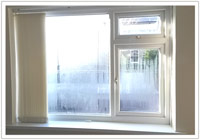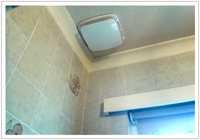
(click image to shrink)
Energy efficient ventilation and improved insulation can solve condensation and mould problems
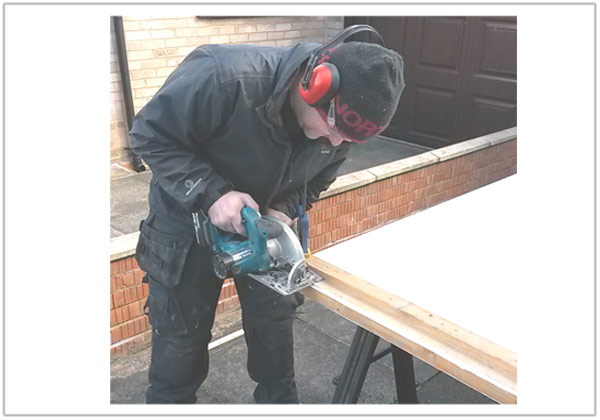
(click image to shrink)
Government guidance on ventilation recommends leaving
a small gap beneath doors. Where a door is tight to the carpet, trimming the bottom will aid air circulation.
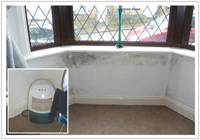
(click image to shrink)
Dehumidifiers are not an effective solution for condensation and mould problems.
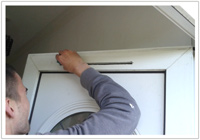
(click image to shrink)
The hallway of this house in Huddersfield was prone to mould.
Fitting a trickle vent in a door helps air movement
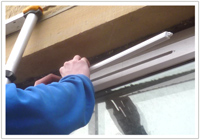
(click image to shrink)
Forming a slot in the window frame is a more effective way of fitting a trickle vent than drilling a few holes - as we found at one property
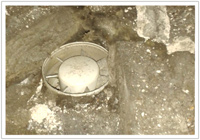
(click image to shrink)
This bathroom fan vents directly into the loft and has caused the roof timbers to become damp.
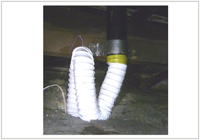
(click image to shrink)
1. The original intermittent extract fan vented through a long uninsulated pipe
- which filled with condensed water and dripped back into the fan.
2. We installed a high quality humidity controlled extract fan, with always-on trickle function,
used insulated ducting and wrapped insulation around the rigid pipe.
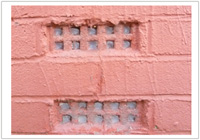
(click image to shrink)
These air bricks are positioned at the bottom of the wall and feed air to underneath the timber floor.
Sealing them increases the likelihood of rot in the floor timbers and contributed to the mould problem in the flat.
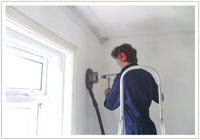
(click image to shrink)
The foam core in this vapour vent reduces problem draughts but still
allows humidity to pass to the outside
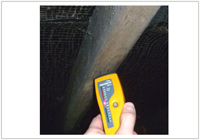
(click image to shrink)
This loft has been air-tight for many years and the roof timbers have become very damp. The meter reading is in the 'red' zone, meaning high water content.
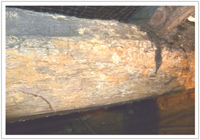
(click image to shrink)
Prolonged dampness has caused these timbers to be weakened by wet rot
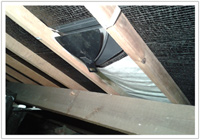
(click image to shrink)
With no changes required to the outside of the roof, these internal vents are highly effective at providing loft ventilation
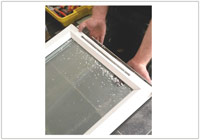
(click image to shrink)
When installed correctly trickle vents can be a valuable part of a home ventilation system
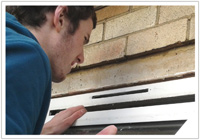
(click image to shrink)
Retro-fitting a trickle vent.
We think all windows should have these as standard
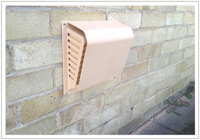
(click image to shrink)
When wall vents face the prevailing weather a wind cover will stop problem draughts
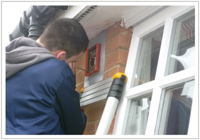
(click image to shrink)
Fitting an external vent cover
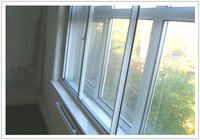
(click image to shrink)
Secondary glazing is very effective at stopping draughts,
but condensation and mould can often form as a result
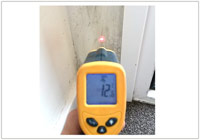
(click image to shrink)
The temperature of a wall is always cooler lower down - attracting more mould which can give the appearance of rising damp
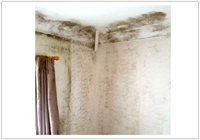
(click image to shrink)
The master bedroom of this house suffered from very severe condensation and mould
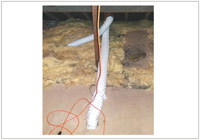
(click image to shrink)
Long lengths of flexible ducting rob ceiling fans of power
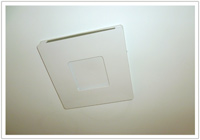
(click image to shrink)
This diffuser feeds a controlled flow of pollen filtered fresh air into a home from a unit located in the loft







